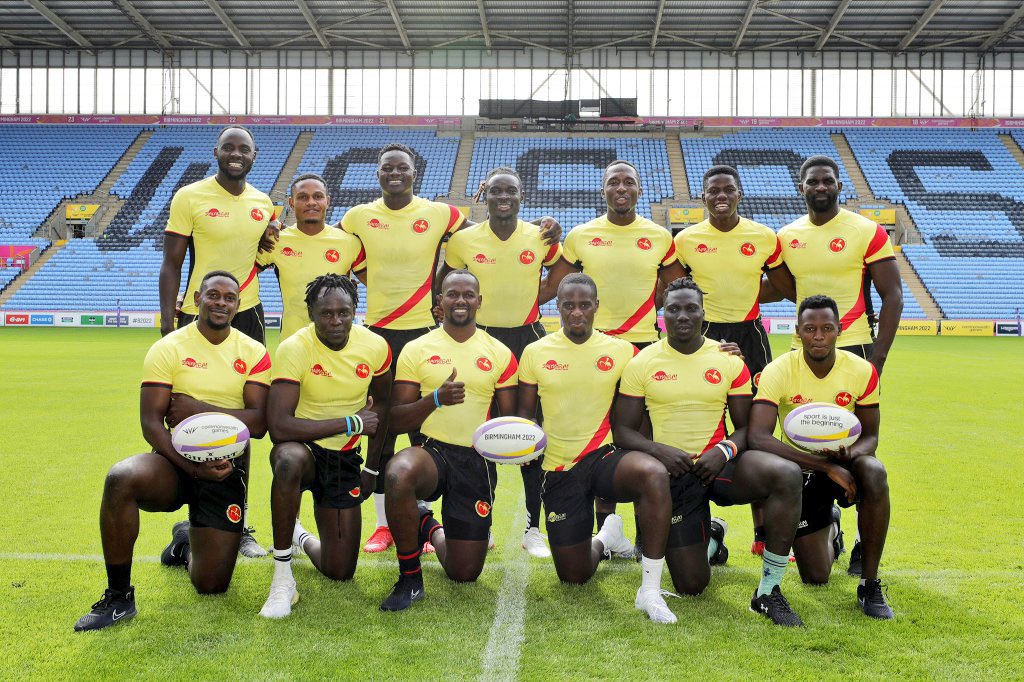The future belongs to Schools Rugby. Why? Because kids represent the next generation and will shape the world through their actions and decisions.
They will inherit the problems and opportunities of the present and have the potential to create a better future.
So, should investing in the future be a priority? someone destined for doom would answer “No!”.

It’s a no-brainer that school rugby has been the backbone of Uganda rugby over the years.
From the vintage days when schools participated as teams in the National League to the modern days with customized age-sectioned leagues due to safety concerns.

The rugby journey starts from the developmental leagues, right through to graduation onto the main stage.
Fall from grace of Schools Rugby
However, there has been a big fallout during the transition from school to club rugby.
The list of school stars who were poised to be “the next big thing”, but disappeared from the scene after school is endless.
Efforts to address this have been through the introduction of feeder sides which enable a smooth transition, not straight into the fire.
However, that doesn’t address the bigger problem. We can’t conceal the fact that the school league is no longer vibrant as it used to be.

We’ve gone from the days when a Smack-Ngo fixture would attract crowds top clubs only dream of, to a non-existent schools league, with low participation in recent times.
This has greatly been due to the effects of Covid-19, but even before then, there was a downward spiral we all saw.
Before the pandemic struck, the dip in school rugby participation was mainly due to sponsorship and rigid school administrations.
The Glory days
School rugby hit its glory days in the 2005 – 2012 period. During this time, there was a steady number of 8 teams in the league, with an active second-tier championship, with promotion and relegation.
We saw two unbelievable teams in that period. The Namilyango 2007 team and the Hana 2011 team.
Those two had clean sweeps in every competition they participated. We also witnessed surprises that broke the traditional dominance, with London College winning in 2009 and Hana in 2011.

It changed the narrative of Smack, NGO, and Budo. There were so many active competitions. The league, Nationals, 7s series, Independence Cup, and East African games.
These happened every year and sometimes stretched across the borders. It should not come as a surprise that even Uganda rugby hit its peak in this particular period, winning the Africa Cup (2007) and the Elgon Cup twice (2006 and 2012).
We can confidently deduce that vibrant school rugby translates into national rugby success on the regional and international levels.
In this particular period, school rugby had a reliable sponsor in beverage giants Coca-Cola.
Post-2012, school rugby was able to remain relevant due to the increase in media coverage.
Kratos, Grip Rugby, and White Oak Sports were private media houses that dedicated sole attention to the league.
At one point Kratos pledged full sponsorship to the league, but due to some questionable scenarios, the deal never went through.
Returning to the good old days
Now the big question is, how do we revive school rugby?
School rugby can only become better if it makes sense to the administrations of the schools.
Before that team of Philip Wokorach, Alfred Bijik, Ronnie, and others who knew of Hana Mixed School?

They literally put the school on the map. Schools should be elucidated on how they stand to benefit from this.
There was a time the administration of King’s College Budo was reluctant to permit boys to compete in the school rugby.
Concerned old boys took it upon themselves to out reason the administration, with evidence based on the number of students who were awarded government sponsorship at the University based on their participation in rugby.
Uganda Rugby Union can also help by relieving the large burden of finances from the participating schools through subsidies and incentives on costs such as transport, feeding, hydration, and conditioning.
It’s been good seeing how rugby has been introduced in many schools across the regions, but that support is still necessary, especially for upcountry areas. I feel these are the things we need to sell to the sponsors.

Budgets should be set aside for outstanding players to further their studies.
It would support be nice to interest sponsors in being part of the long-term lives and development of the players.
We also need to make the environment conducive for entities that show support toward the development of school rugby.
The Role of Clubs in Schools Rugby
Students have also taken it upon themselves to push the games. They occasionally organize holiday competitions to challenge each other, and the attendance is pretty impressive.
Every club should take on a school to train as part of their community outreach. In the long run, this will enhance the pool of talents a club can select from.
Since time immemorial Namilyango College has had a close association with KOBs. You can see how that has benefited the Blue army and also translated to the National team.
In conclusion, School rugby should be given more priority because it is not only a players’ nursery bed but also a viable fanbase fountainhead.
After all, it’s easier to convert people who have an idea about the game into lifelong devoted fans than mere clueless pork eaters.
Courtesy photos.